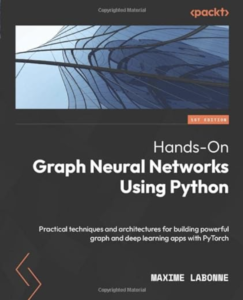Overview of HARP
HARP (Hierarchical Attention Relational Graph Convolutional Network for Poverty Prediction) becomes a hierarchical attention relational graph convolutional network for poverty prediction. The method uses data with a graph structure (e.g. city demographics, geographical characteristics, socio-economic indicators, etc.) to predict poverty. An overview of HARP is given below.
1. hierarchical attention mechanism: HARP uses a hierarchical attention mechanism to effectively extract different levels of information in the graph. The network applies hierarchical attention to automatically identify important nodes and edges in the graph.
2. utilising relational graph convolutional networks (R-GCNs): HARP is based on relational graph convolutional networks (R-GCNs) described in “Overview of R-GCN and examples of algorithms and implementations“, which perform convolution operations on data with a graph structure and update node features by taking different types of relations are taken into account.
3. utilising graph structures: HARP takes data with graph structures as direct input and transforms these data into feature representations for poverty prediction. Graph structures are represented by connecting information such as city demographics, geographical features and socio-economic indicators at the edges.
4. application to poverty forecasting: HARP uses data with a graph structure to forecast poverty. The model learns geographical, socio-economic and demographic features and estimates the risk of poverty from these features.
HARP is an effective method for predicting poverty from complex data with a graph structure, and the combination of the hierarchical attention mechanism and R-GCN provides a more comprehensive feature representation and improves the accuracy of poverty prediction.
Case studies on the application of HARP
The following are examples of HARP applications.
1. identifying poor areas: HARP can be used to identify poor areas by combining geographical, socio-economic and demographic information, for example, feeding city or regional data as input to a model to predict poverty rates by region.
2. support for poverty reduction policies: HARP can help to identify areas and people at high risk of poverty, which in turn can help governments and international organisations to design poverty reduction policies and provide effective support.
3. evaluation of social welfare programmes: HARPs are used to assess the effectiveness of social welfare programmes by comparing projected poverty rates with actual poverty rates, so that programme effectiveness can be assessed and improvements can be suggested where necessary.
4. prioritisation of disaster relief: HARP can help prioritise post-disaster relief and can predict poverty rates and socio-economic vulnerability in disaster-affected areas for effective allocation of assistance.
5. risk assessment of financial institutions: HARP can help financial institutions to assess their risks and predict the risk of defaults and customer credit risk, taking into account poverty rates and economic instability factors.
Examples of HARP implementations
HARP is a complex model for poverty prediction and requires several steps to implement. A partial example of a HARP implementation is given below. This example uses Python and the PyTorch library.
import torch
import torch.nn as nn
import torch.nn.functional as F
from dgl.nn import GraphConv
class HARP(nn.Module):
def __init__(self, in_feats, hidden_size, num_classes):
super(HARP, self).__init__()
self.conv1 = GraphConv(in_feats, hidden_size)
self.conv2 = GraphConv(hidden_size, hidden_size)
self.fc = nn.Linear(hidden_size, num_classes)
def forward(self, g, features):
h = F.relu(self.conv1(g, features))
h = F.relu(self.conv2(g, h))
g.ndata['h'] = h
hg = dgl.mean_nodes(g, 'h')
return self.fc(hg)
# Model definition.
model = HARP(in_feats, hidden_size, num_classes)
optimizer = torch.optim.Adam(model.parameters(), lr=lr)
# Data loading and pre-processing
g, features, labels = load_and_preprocess_data()
# learning loop
for epoch in range(num_epochs):
logits = model(g, features)
loss = F.cross_entropy(logits, labels)
optimizer.zero_grad()
loss.backward()
optimizer.step()This example implementation uses PyTorch and the Deep Graph Library (DGL) to implement the HARP model, where the HARP class has two GraphConv layers to perform convolution operations on the graph structure and a linear layer for final classification. The learning loop uses Adam as an optimisation method to train the model to minimise cross-entropy loss.
The actual implementation requires additional steps such as data loading, pre-processing, evaluation and tuning of hyper-parameters, and the architecture and hyper-parameters of the model need to be adjusted according to the actual data set and problem.
HARP challenges and response measures
HARP is a model for poverty forecasting and there are several challenges in its implementation and application. The following are some of the challenges of HARP and how they can be addressed.
1. data imbalance: in problems such as poverty forecasting, there is a data imbalance between the poor and the non-poor. This can affect model training and evaluation.
Solution: Use techniques such as oversampling, undersampling and class weighting to eliminate data imbalances. Also, employ alternative evaluation metrics and error functions to deal with imbalanced data.
2. graph representativeness: as HARP is applied to data with a graph structure, restrictions on the representativeness of the graph may exist. In particular, problems may arise when the graph is incomplete or some nodes or edges are missing.
Solution: to improve the expressiveness of the graph, pre-process or complement the data, or generate additional features. Also, use more complex graph models and convolutional operators to learn richer feature representations.
3. model interpretability: HARPs are complex models whose internal mechanisms can be difficult to interpret. In particular, it is difficult to explain the model’s predictions when using methods such as hierarchical attention mechanisms.
Solution: use methods such as visualisation of important nodes and edges in the graph, visualisation of attentions and analysis of the importance of features to improve the interpretability of the model. Alternatively, simpler or more explainable models could be adopted.
Reference Information and Reference Books
For more information on graph data, see “Graph Data Processing Algorithms and Applications to Machine Learning/Artificial Intelligence Tasks. Also see “Knowledge Information Processing Techniques” for details specific to knowledge graphs. For more information on deep learning in general, see “About Deep Learning.
Reference book is

“Graph Neural Networks: Foundations, Frontiers, and Applications“等がある。

“Introduction to Graph Neural Networks“

“Graph Neural Networks in Action“



コメント